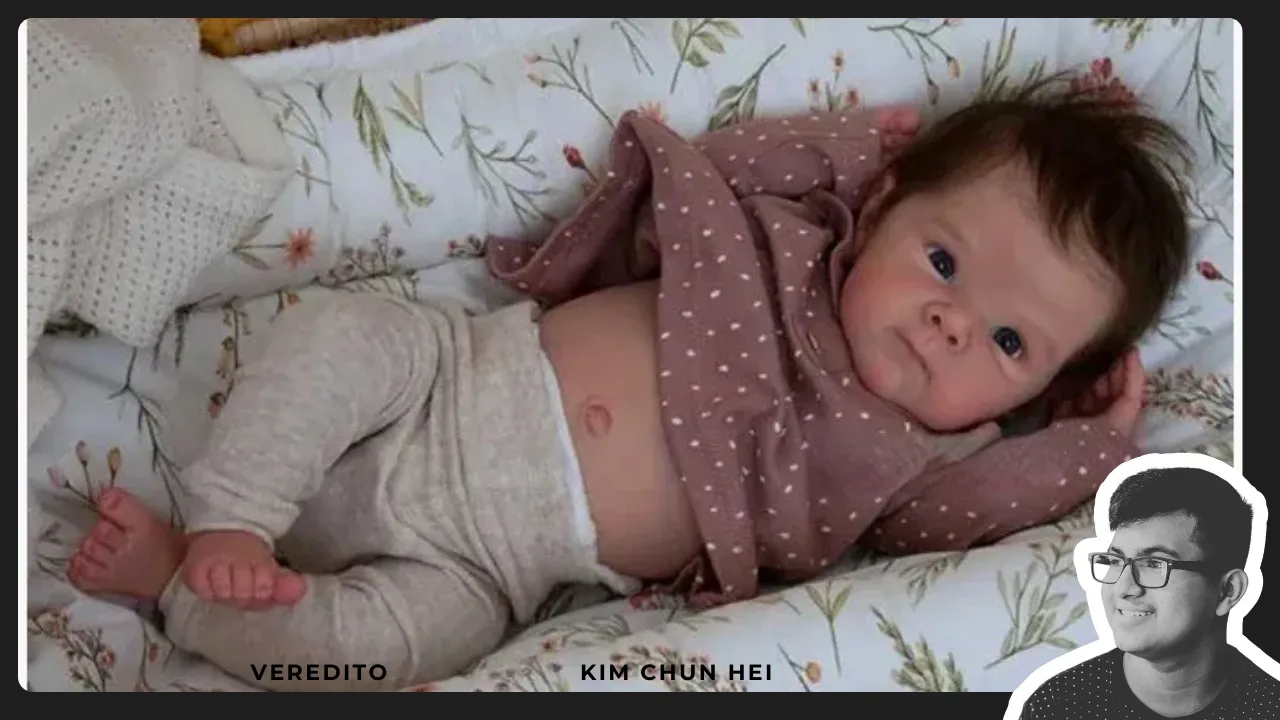What painting techniques are used on Reborn Dolls?

When it comes to creating lifelike Reborn Dolls, painting techniques play a crucial role in transforming a simple doll into a work of art. These delicate and intricate processes require a blend of creativity and skill, making them a fascinating subject for both artists and collectors. In this article, we will delve into the various painting techniques used on Reborn Dolls, exploring how they contribute to the dolls’ hyper-realistic appearance. Whether you’re a collector looking to expand your knowledge or a hobbyist eager to get started, this guide is for you.
Understanding Reborn Dolls
Before diving into the painting techniques, it’s important to understand what Reborn Dolls are. These dolls are crafted to resemble human babies as closely as possible. Artists, known as “reborners,” meticulously create each doll by hand, from the selection of materials to the final touches of paint. Each Reborn Doll is unique, reflecting the artist’s vision and technique.
The Importance of Painting Techniques
The painting of Reborn Dolls is not just about adding color; it’s about creating dimension, depth, and realism. The techniques used can dramatically affect the final appearance of the doll, enhancing its lifelike features and making it more appealing to collectors. Here, we will cover the primary painting techniques used in the crafting of Reborn Dolls.
1. Base Layer
The first step in painting Reborn Dolls is applying a base layer. This technique provides the foundation for further detail work. Here’s how it typically goes:
- Choosing the Right Paint: Artists usually start with a special kind of paint known as Genesis Heat Set Paints or air-dry paints. These paints are durable and designed specifically for use on vinyl dolls.
- Application: The base layer is applied in thin coats to avoid buildup, allowing for greater control and smoother surfaces.
- Color Selection: Artists often mix various shades to achieve a skin tone that closely resembles that of an actual baby.
2. Layering Techniques
Layering is essential for achieving the depth and realism found in Reborn Dolls. This involves adding subsequent layers of paint that build upon the base layer.
Veining
One of the most critical aspects of layering is the application of veining. Here’s what it entails:
- Color Mixing: Shades of blue and purple are typically mixed to create a subtle vein effect.
- Application: Artists carefully apply these colors using fine brushes, creating the illusion of veins beneath the skin.
Blushing
Another significant technique is blushing, which provides a healthy, rosy glow to the cheeks and other areas.
- Selecting Colors: Soft pinks and peaches are commonly used to enhance the doll’s facial features.
- Technique: The paint is lightly stippled onto the cheeks, nose, and other areas, creating a soft, natural appearance.
3. Sealing the Paint
After the initial layers are complete, it’s crucial to seal the paint to ensure its longevity and prevent any damage.
- Types of Sealers: Artists can use either matte or semi-gloss sealers, depending on the desired finish.
- Application Method: Sealers are usually applied with a soft brush or airbrush for an even coating.
4. Special Effects Techniques
To enhance realism even further, reborners often utilize various special effects techniques. These can include:
- Translucency: Applying transparent layers of color can mimic the way light penetrates human skin.
- Texture: Some artists create a slightly textured skin effect that replicates tiny pores and skin imperfections.
5. Detailing the Features
Once the main paint job is completed, artists focus on detailing specific features to enhance realism.
Eyes
Painting the eyes of a Reborn Doll is an art in itself:
- Coloring: A variety of colors and highlights are used to give the eyes depth and character.
- Detailing: Artists often add eyelashes and eyebrows to further enhance the doll’s lifelike appearance.
Lips
The lips also require careful attention:
- Color Mixing: Shades of pinks and reds are blended to mimic natural lip tones.
- Shading: Adding darker shades on the edges creates the illusion of fullness and dimension.
6. Hair Painting Techniques
Unlike traditional dolls, Reborn Dolls often have painted hair rather than rooted strands. This technique requires a different set of skills:
- Choosing the Right Colors: Artists often mix various shades to create realistic hair tones.
- Application: Using fine brushes, artists layer paint to create strands and texture that mimic realistic hair.
7. Final Touches
After all the primary and detailing work is done, artists may apply additional final touches to perfect the doll:
- Glossing: Applying a slight gloss on the lips and eyelids can replicate the natural shine of a baby’s skin.
- Fingernails and Toenails: Fine detailing is also applied to nails, including tiny white tips for added realism.
8. Maintenance of Reborn Dolls
To ensure your Reborn Doll remains in pristine condition, proper care and maintenance of the painted surfaces are necessary:
- Avoid Direct Sunlight: Direct exposure can fade the paint.
- Gentle Cleaning: Use a soft, damp cloth for cleaning, avoiding harsh chemicals that could damage the paint.
The Art of Selling Reborn Dolls
If you’re considering selling Reborn Dolls, understanding the painting techniques and their impact on the dolls’ appeal is crucial. Potential buyers often look for the following:
- Attention to Detail: Buyers appreciate the effort and skill that goes into realistic painting.
- Quality Materials: Using high-quality paints and sealers can enhance the durability and desirability of your dolls.
Getting Started with Reborn Doll Painting
If you’re eager to try Reborn Doll painting, here are some essential tips for beginners:
- Start Small: Begin with a less expensive vinyl doll to practice your techniques.
- Research: Watch tutorial videos and read guides to familiarize yourself with the tools and techniques.
- Invest in Quality Supplies: High-quality paints, brushes, and sealers will yield better results.
- Practice Patience: Mastering these techniques takes time; don’t rush the process.
In conclusion, mastering the painting techniques for Reborn Dolls requires patience, practice, and a keen eye for detail. Whether you’re a collector or looking to dive into the realms of doll artistry, understanding these painting methods will deepen your appreciation for this intricate craft. Take the next step in your Reborn Doll journey, and explore the incredible world of lifelike artistry that awaits you.

LINK:
Reborn dolls have taken the collectible world by storm, and their lifelike appearance is primarily due to the meticulous painting techniques employed by artists. These techniques include layering, shading, and the use of special paints designed for vinyl and silicone materials. Artists often use a heat-setting process to ensure the paint adheres properly, followed by the application of varnish to provide durability and realism. Understanding these techniques not only deepens appreciation for the craftsmanship behind each doll but also guides potential buyers in selecting high-quality reborn dolls that genuinely capture the essence of human appearance.
Painting Techniques Used on Reborn Dolls
Creating lifelike reborn dolls involves several intricate painting techniques that replicate the nuances of human skin. Here are some prominent methods:
- Layering: Multiple thin layers of paint are applied to build depth and realism.
- Shading: Artists use darker tones in creases, folds, and areas that naturally have shadows to enhance dimension.
- Veining: Fine lines are painted to simulate the appearance of veins beneath the skin.
- Blushing: Soft, rosy hues are added to mimic natural skin tones and enhance facial features.
- Texture Painting: Techniques are employed to create a realistic skin texture, often using sponges or brushes.
FAQ
1. What types of paint are used on reborn dolls?
Artists typically use air-dry paints or special vinyl paints that bond well to the doll’s surface. These paints are designed to provide durability and a realistic finish.
2. How long does it take to paint a reborn doll?
On average, it can take anywhere from 20 to 40 hours to fully paint a reborn doll, depending on the level of detail and techniques used.
3. Can I paint my own reborn doll?
Yes! There are many tutorials and kits available for beginners. However, achieving a professional look requires practice and patience.
4. Why is layering important in painting reborn dolls?
Layering is crucial as it creates depth and realism, allowing colors to blend naturally and giving the illusion of translucent skin.
5. What is the best varnish for reborn dolls?
Amatting or satin varnish specifically formulated for vinyl or silicone dolls is recommended to protect the paint while providing a realistic finish.
6. Can painting techniques affect the doll’s price?
Absolutely! Dolls that are intricately painted with advanced techniques typically command higher prices due to the skill and time invested.
7. How do I care for the paint on my reborn doll?
To maintain the paint, keep the doll away from direct sunlight, avoid harsh chemicals, and gently clean the surface with a soft, dry cloth.
8. Are there any signs of good quality paint on a reborn doll?
High-quality reborn dolls will feature smooth color transitions, realistic blushing, and well-defined veins without any paint clumps or inconsistencies.
Conclusion
Understanding the intricate painting techniques used in crafting reborn dolls enhances your appreciation for these incredible collectibles. Techniques such as layering, shading, and texturing are essential in creating dolls that closely resemble real infants. With the right knowledge, you can choose a reborn doll that embodies both artistic skill and emotional connection, making it a treasured addition to your collection or a thoughtful gift. Explore the diverse world of reborn dolls today and discover the craftsmanship behind these captivating creations!


